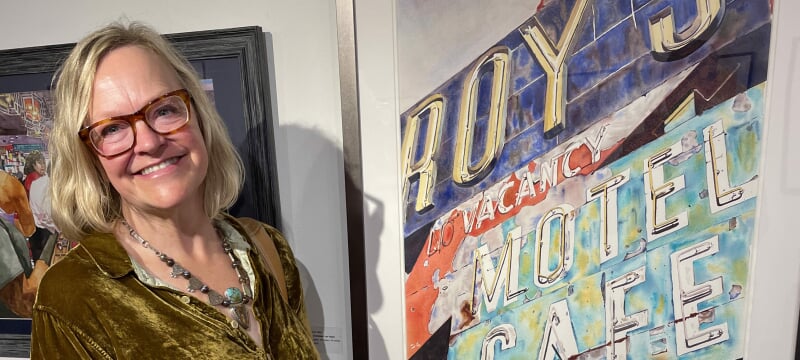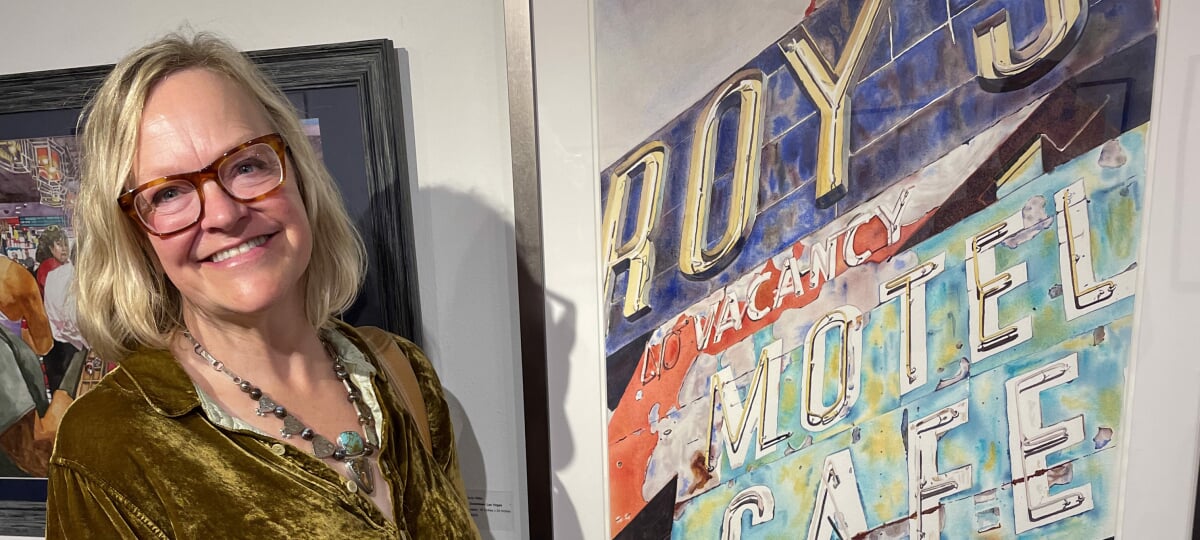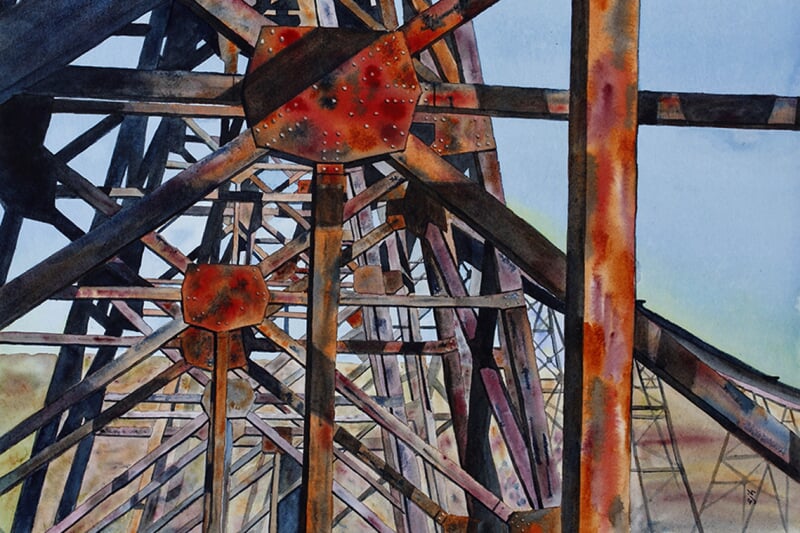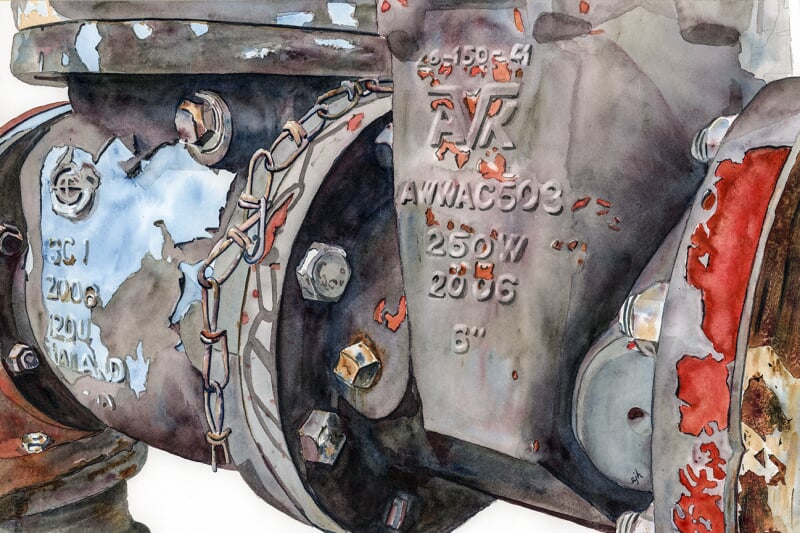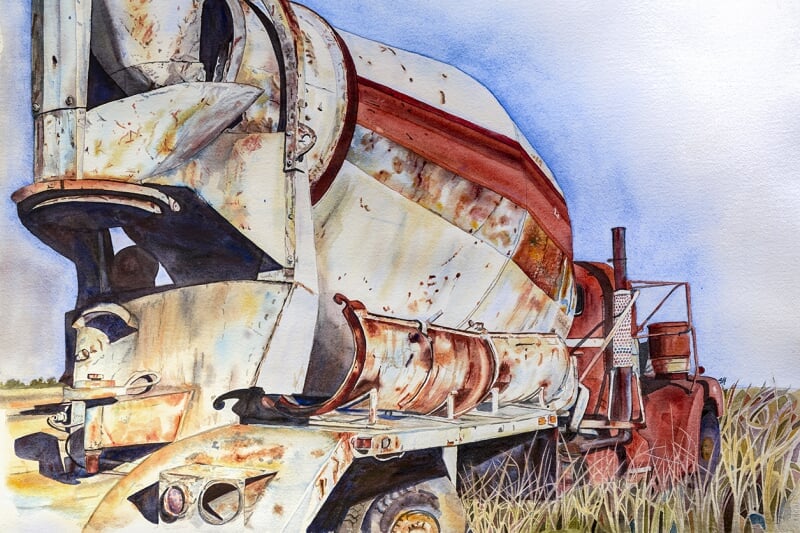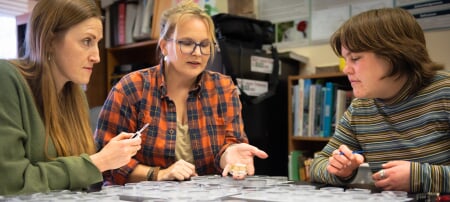For many alumni, attending Michigan Tech is a formative experience—shaping careers, deepening their connection to nature, and encouraging a life of exploration. For Ellen Hedfield ‘85 (BS Chemical Engineering), it did all that and more. Now retired, the former environmental engineer and longtime outdoors enthusiast is exploring a second act in watercolor art.
Growing up in Detroit, Hedfield initially wanted to become an architect until a high school advisor suggested engineering. Applying to just two universities, Michigan Tech and the University of Michigan, Hedfield visited Ann Arbor but it wasn’t the right fit. She enrolled at Tech, sight unseen, and it didn’t take her long to know that she made the right decision.
"From the minute I got to Houghton, I made friends easily, loved the campus, and it was just the right fit for me. The fall colors, Lake Superior, ore carriers, the lift bridge, beautiful and intense winters… I loved all that."
As a chemical engineering student, Hedfield learned how to design chemical processing equipment for the petrochemical industry. “Statics and dynamics, fluid flow, heat transfer—that kind of curriculum I really thrived in,” she said.
While at Tech, Hedfield also joined Blue Key and helped plan Winter Carnival. “I loved Blue Key. All the planning that went into Winter Carnival—it was a great experience. It taught me a lot about teamwork, which ended up being incredibly valuable in my career.”
After graduating in 1985 with a bachelor’s in chemical engineering, Hedfield landed her first job thanks to a tip from a fellow Tech graduate. She joined a specialty environmental engineering office with the US Navy in Southern California, working on military sites under the Superfund program. “I packed up and moved to the beach in Ventura County, and learned on-the-job how to be an environmental engineer,” she said. “I’m grateful that my first role gave me so much training in a completely new field.”
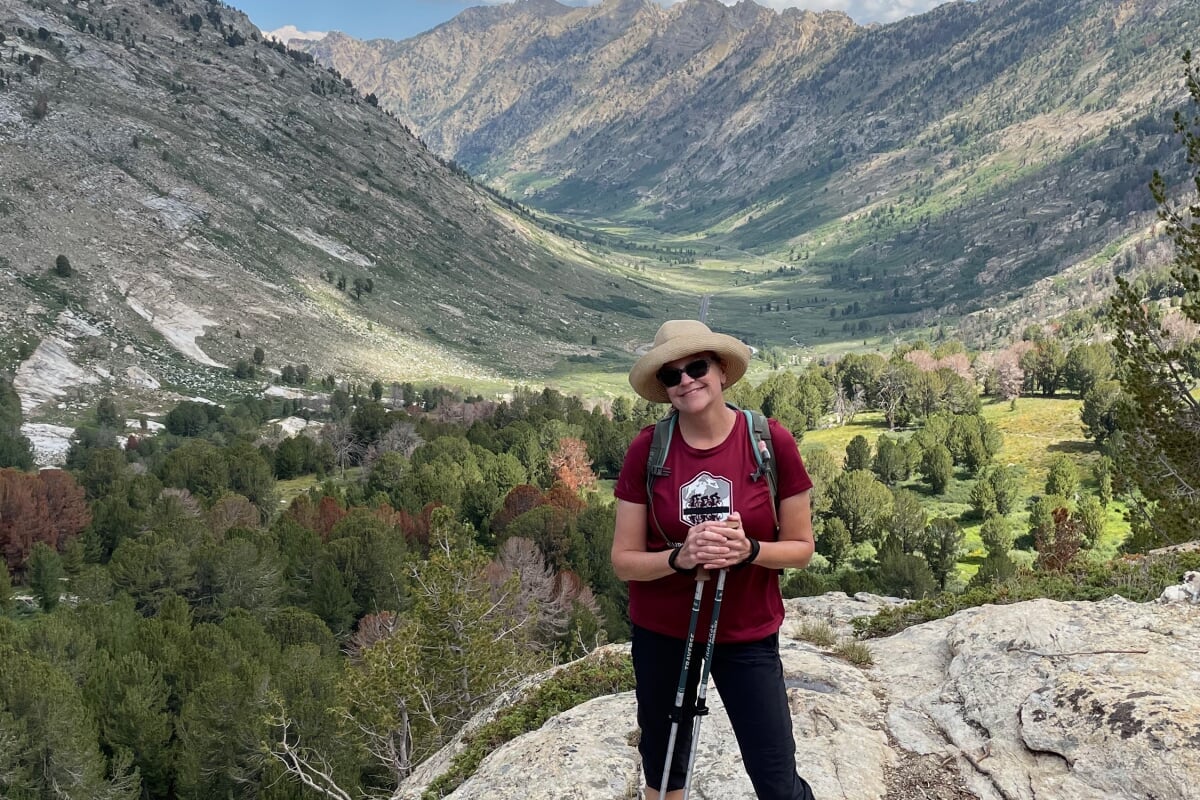
One opportunity led to another, and after the Exxon Valdez spill in 1989, Hedfield’s experience with oil spill planning sent her to Alaska for what was supposed to be a short-term project. “Instead, it turned into nine amazing years,” she said. “I came to love the Alaskan outdoor lifestyle—cross-country skiing, sea kayaking, hiking, backpacking. My years in Houghton prepared me to not only persist through long winters, but to enjoy them and get outside.”
Professionally, Hedfield tackled complex environmental challenges and oversaw cleanup efforts at military and industrial sites across the state. It was demanding work, especially in winter, traveling from the oil fields of Prudhoe Bay to dozens of remote Alaska Native villages. Looking to unwind from the stress of work, Hedfield signed up for an introductory watercolor workshop at the University of Alaska—and she loved it.
“When I started painting in the mid-1990s, I was drawn to painting old buildings from my travels: an Italian villa, an Alaskan fishing shack, a disco in Argentina. I liked getting the lines and perspectives right, and I loved depicting weathered textures of the buildings—brick, stone, wood. I think I felt right at home painting structures, having taken lots of architectural drafting, mechanical drawing, and graphic design classes in high school and at Michigan Tech.”
Later, when she moved back to California, Hedfield found herself surrounded by artists painting abstract art. “I was really intrigued, but my engineer brain just couldn’t grasp how to paint that way!” she said. “Then, one of my instructors showed me a technique where I could take an image my brain recognizes, zoom in closely on a portion of the image that interests me, crop the photo, and focus on painting the shapes, colors, and textures in a more abstracted way.”
The result was what Hedfield calls “left-brained art,” and she’s been working in that style ever since. Now painting full time from her home in Redding, California, she creates large-format watercolors inspired by the rural West. On her website, she describes her work as often centered on weathered structures, equipment, and overlooked roadside relics. She still photographs everything she paints.
One of her favorite paintings, Curvature (pictured below), captures the underside of a railroad trestle in rust-toned watercolor. “Most people wouldn’t even recognize what it is,” she joked. “Except for engineers!”
In recent years, Hedfield has spoken publicly about the value of applying the arts in STEM—what’s now commonly referred to as STEAM. Drawing from her own career, she's found that this means being able to communicate effectively, think creatively, and visualize complex data and ideas for a potentially wide range of audiences.
"You can be an excellent engineer, but to really grow in your career, you need to be part of a team. I’m more appreciative now than ever of my experiences at Tech, especially when it comes to learning how to work well with others."
“In a recent keynote speech I gave to a group of middle school girls, I specifically made the point that going into STEM fields does not mean you have to give up your artistic interests—in fact, your artistic interests contribute well to a STEM career, I believe!
“Being able to lead a multidisciplinary, collaborative team toward a shared goal—that’s been key to my success,” she said. “And that started at Michigan Tech.”
Michigan Technological University is an R1 public research university founded in 1885 in Houghton, and is home to nearly 7,500 students from more than 60 countries around the world. Consistently ranked among the best universities in the country for return on investment, Michigan's flagship technological university offers more than 185 undergraduate and graduate degree programs in science and technology, engineering, computing, forestry, business, health professions, humanities, mathematics, social sciences, and the arts. The rural campus is situated just miles from Lake Superior in Michigan's Upper Peninsula, offering year-round opportunities for outdoor adventure.
